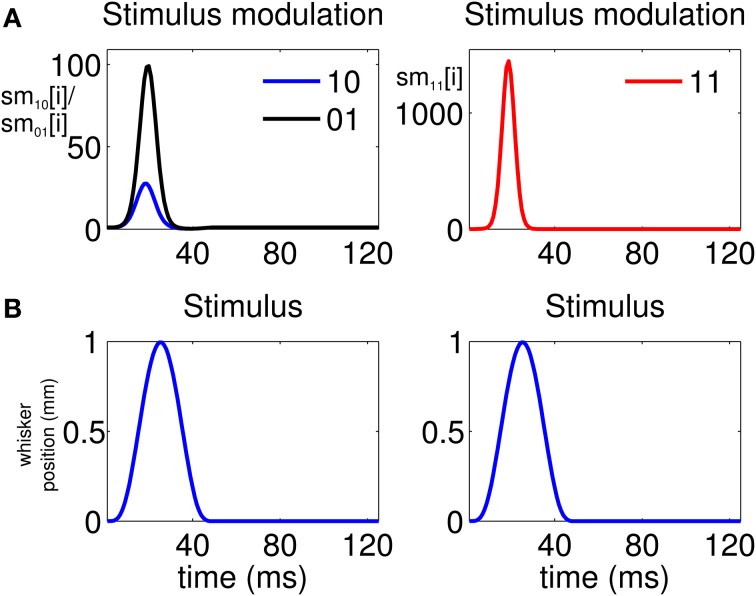Figure 4.
Stimulus modulation of non-simultaneous (“10” and “01”) and simultaneous (“11”) events, over a single stimulus period. The stimulus modulation of an event is the amount by which the stimulus increases the probability of that event. (A) Left: Stimulus modulation of the non-simultaneous events, . Right: Stimulus modulation of the simultaneous event, . (B) Stimulus over a single period. The figure shows that the maximum amount by which the stimulus increases the probability of joint spiking is one order of magnitude greater than that by which the stimulus increases the probability of non-simultaneous spiking. Thus, simultaneous spiking can be attributed for the most part to the administration of the stimulus.

